
Khao Lak National Park or Khao Lak-Lam Ru (Khao Lak-Lam Ru National Park) is the highlight of Thailand, first of all attracting attention with its gorgeous virgin nature, harmoniously combining tropical forests, steep cliffs, waterfalls, lakes, rivers and beaches.
The park is named after two of its mountain peaks: Kao Lak and Lam Ru.
Khao Lak Park is large, with an area of 125 square kilometers (48 square miles).
In addition to the beautiful pristine nature, tourist and entertainment activities are also organized in the park. Here you can relax, walk along the paths among the jungle, visit beaches and temples, see waterfalls and lakes, rafting on rivers on rafting or bamboo rafts, try out safari on jeeps or elephants.
The largest waterfall of the park is the five-level waterfall Lam Ru (Lam Ru Waterfall).
Khao Lak National Park is located on the mainland of Thailand, near the Andaman Sea in the province of Phan Nga, in which, in addition to the park, there are also other interesting locations, including temples and observation decks.
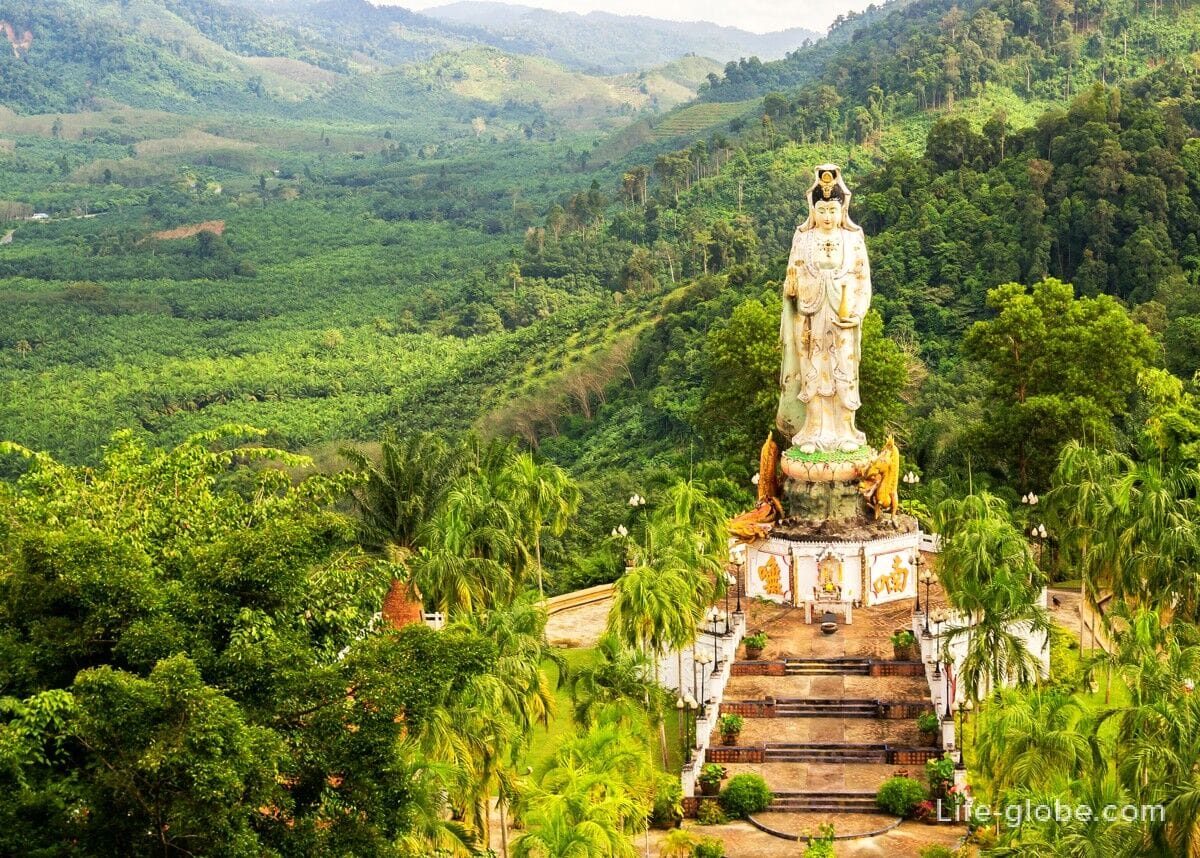
You can visit the Khao Lak National Park and the surrounding area, both independently and with an excursion. We visited this park with a Khao Lak Safari tour while staying on Phuket Island.
The tour is designed for the whole day. One day, of course, is not enough for such a park, in such a short time it will not be possible to see parts of all the embellishments, but it is quite enough for familiarization. In addition, this tour is very rich, partly informative, partly entertaining, and partly even relaxing. In one day you will see a lot of interesting things: mountains, jungles, waterfalls, turtles and crocodiles, visit the temple-cave of the reclining Buddha, meet funny monkeys who eat right from their hands, learn how pineapples grow, ride bamboo rafts on a mountain river and try elephant safari. We can fully recommend this excursion to the park to everyone.
The excursion to Khao Lak Safari includes:
- meeting (picked up from the hotel and brought to the hotel) in a comfortable minivan with air conditioning
- visit to the turtle farm
- river rafting on bamboo rafts
- lunch at a local cafe
- stop at pineapple plantation
- elephant riding and a show with an elephant. On request and for an additional fee - bathing with an elephant
- visit to the temple-cave of the reclining Buddha (Wat Suwan Kuha) and Monkey Mountain
- visit the waterfall, if desired, swimming in the waterfall. In the dry season, the waterfall dries up; we went on an excursion in March, so we didn't get to the waterfall
The price of the tour also includes: insurance, drinking water, guide support.
Since this tour is visited daily by a large number of tourists, then, in order to disperse the flow, the route of the tour may change. Someone first visits the turtle farm, and then rides elephants and goes to the temple, while others first visit the temple, and only after they go to the rafting and the turtle farm. But the essence of the tour does not change from this.
We recommend taking with you: sunscreen and hats; phone, camera; money for additional expenses. Put on bathing suits (or take them with you) and comfortable shoes. Optional: sunglasses, towel, replaceable shorts and T-shirt.
The cost of an excursion from Phuket: from 2 800 - 3 000 baht - adult ticket, from 1,800 baht - children's ticket.
Also from Phuket and other places in Thailand there are excursions to Khao Lak, the program of which includes other significant objects of the park and the surrounding area. For example, the Samet Nangshe Viewpoint with views of the Bond Islands, the temple of the Black Monk (Wat Kaew Manee Si Mahatha) with a huge statue of a monk made of black stone, the temple-museum of Hell and Paradise (Tham Tapan Monastery, Tham Tapan Bureau of Monks) with a cave in the form of an open mouth of a dragon, the temple of Bang Riang (Wat Bang Riang) with huge statues of Buddha and goddess of mercy Guanyin, Cheo Lan Lake (Cheo Lan, located in Khao Sok National Park) with magnificent landscapes, rocks protruding from the water, juicy islands and crystal turquoise water.
If you decide to visit Koa Lak and the surrounding area on your own, it is more convenient to do it by car, while staying in Khao Lak (Phan Nga province) for a few days.
Rent a car in Thailand (Phuket, Bangkok and other places) →
Accommodation facilities (hotels, apartments, etc.) in Khao Lak
Guests are picked up from the hotel in the morning. We were picked up at 07:30 in the morning and we drove from Phuket Island to the mainland of Thailand. The road, with the gathering of all the participants of the tour, took about an hour and a half.
The first stop was a visit to the turtle farm.
The turtle farm is a mini-zoo, on the territory of which, in addition to turtles, you can see crocodiles and fish, as well as walk around the picturesque territory.


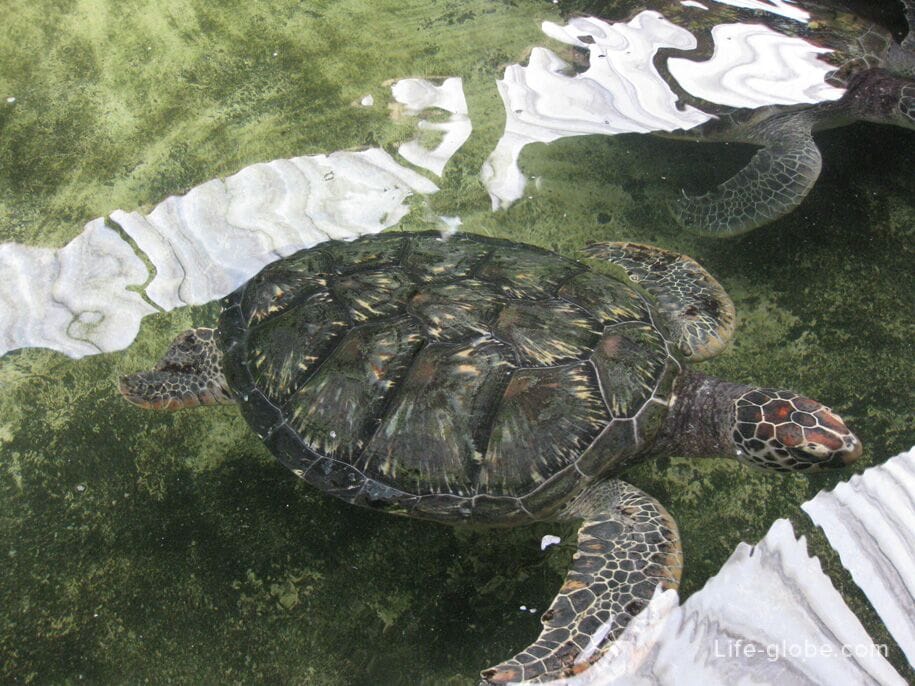
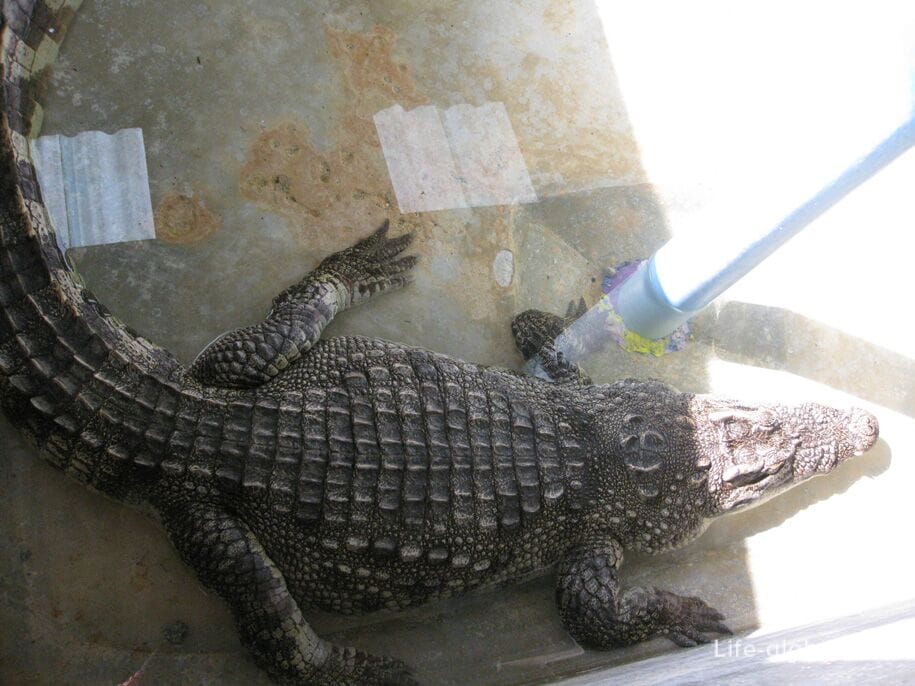
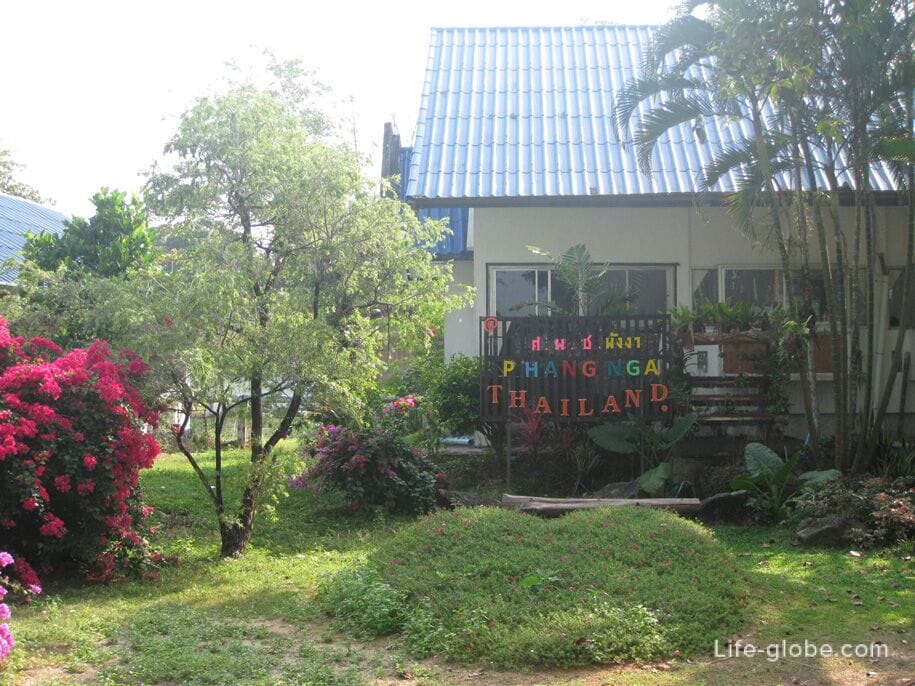
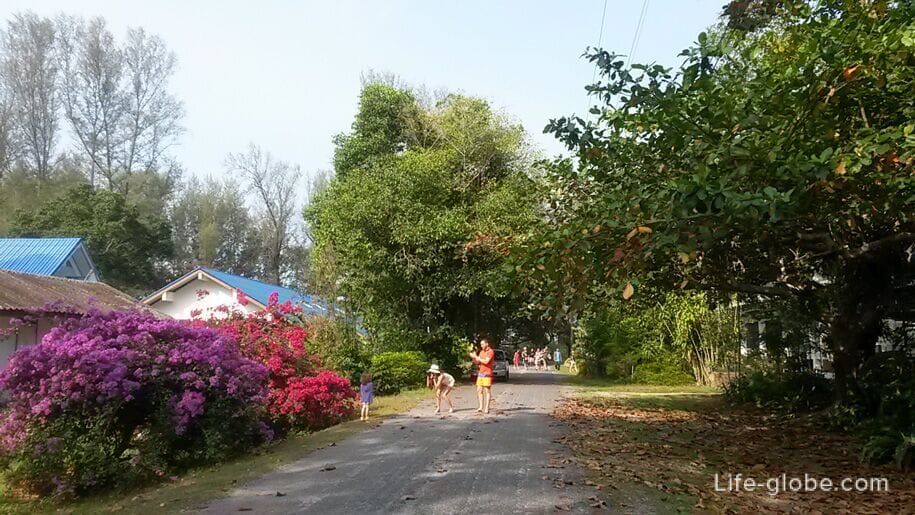
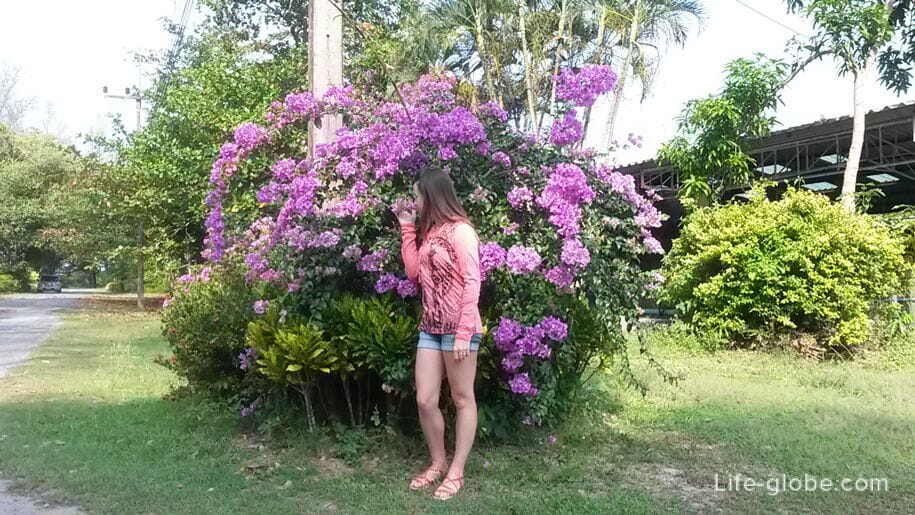
According to the guide's assurances, turtles are raised on the farm up to a certain age, and then released into the wild. This is done by decree of the former King of Thailand, to preserve the endangered population.
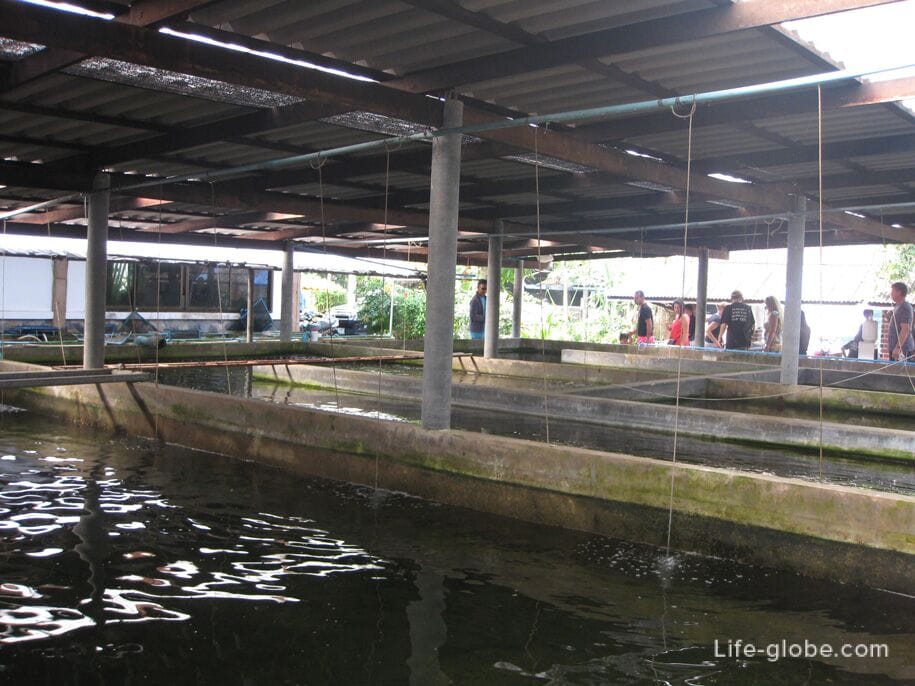
At the exit from the farm, we bought coconut ice cream. This is the most delicious ice cream that we managed to try in Thailand. We have found such ice cream, at the moment, in only two places: at a merchant near this farm and near the Big Buddha in Phuket.
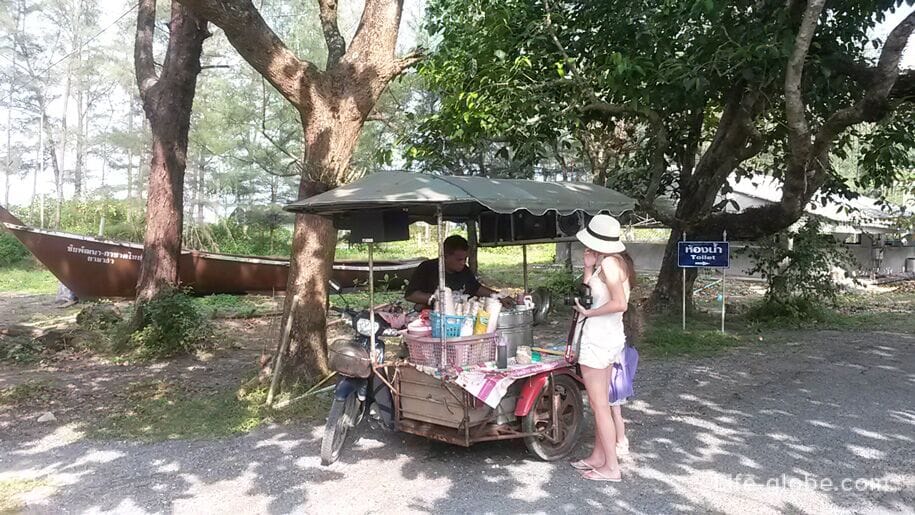
Our second stop was rafting down the river on bamboo rafts.
It was this part of the tour that we remembered the most. This is not rafting, there is no extreme here, the Kaolak River was very calm and quiet. Our group of two people sat on rafts and Thai boys, deftly managing the raft, floated you down the river. The whole river walk took 30-40 minutes.

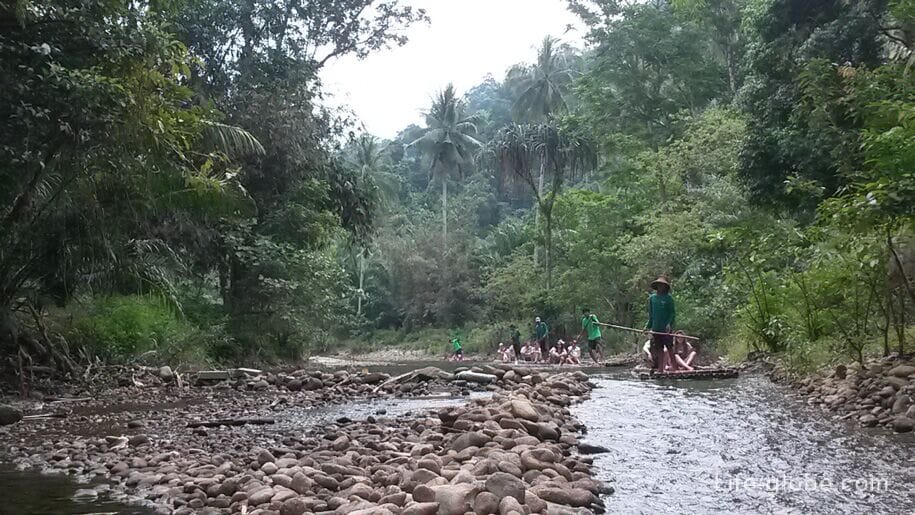

At first, we were even a little upset because of the slow rafting, but after a few minutes, calmness and serenity appeared in the soul. We were completely detached from reality, swimming, enjoying the views of the jungle and the silence, broken only by the sound of water and the occasional cries of birds. It was truly beautiful and comfortable.
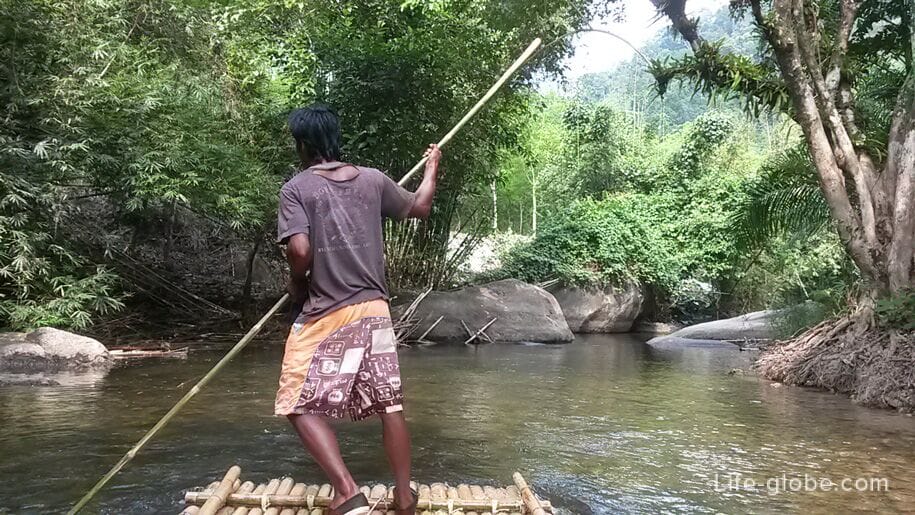
During the rafting, from the shore, we were photographed, and after the rafting we were offered to buy a photo in an ecological frame made of elephant poop)). Quite an interesting photo, and we bought one for ourselves. The cost is 200 baht per photo.
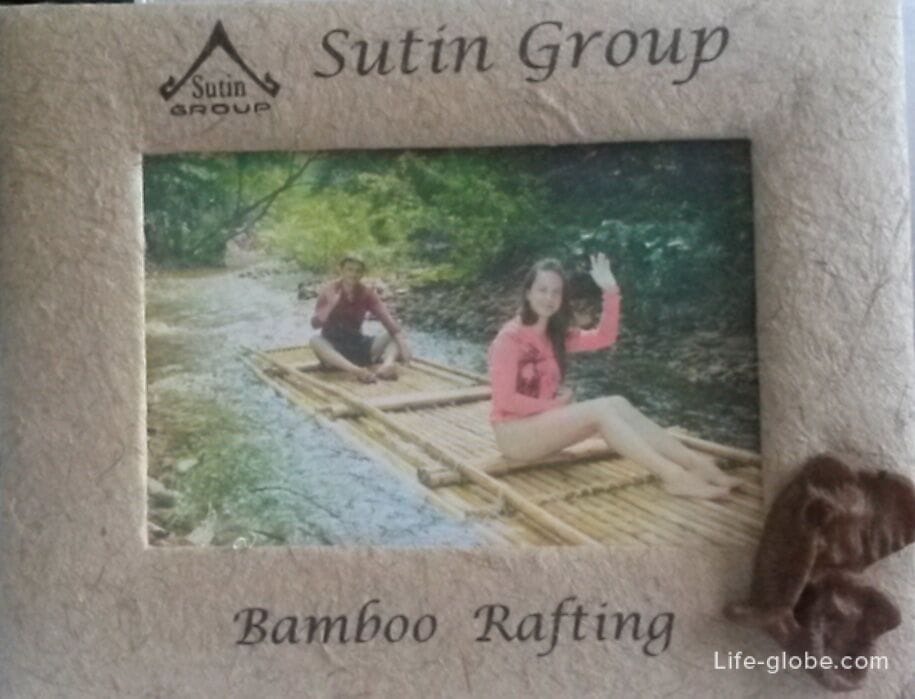
At the end of the rafting we were met by a small truck.

After rafting, we went to a cafe for lunch.
For lunch, they gave soup, vegetables, fish, rice, meat with potatoes, French fries, Thai rolls, fruits and drinks with cookies. Lunch was not bad and quite delicious, especially after a busy first half of the day spent outdoors.
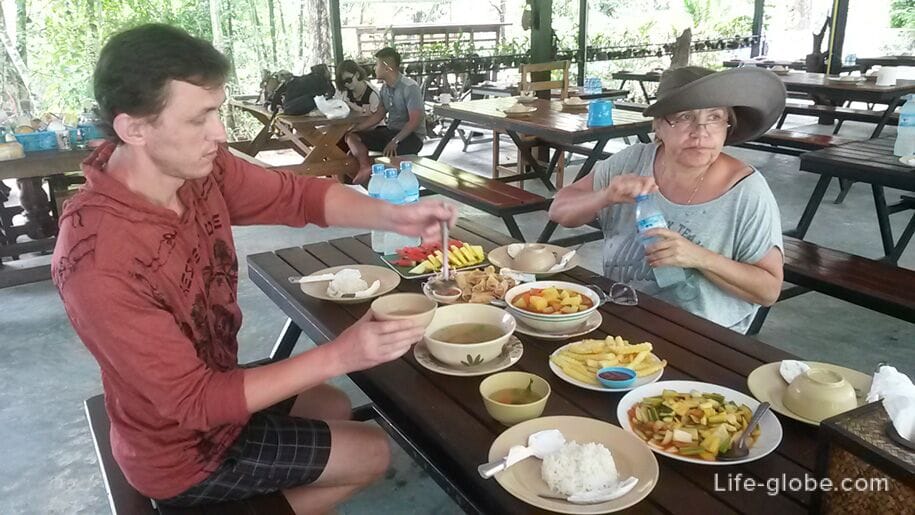
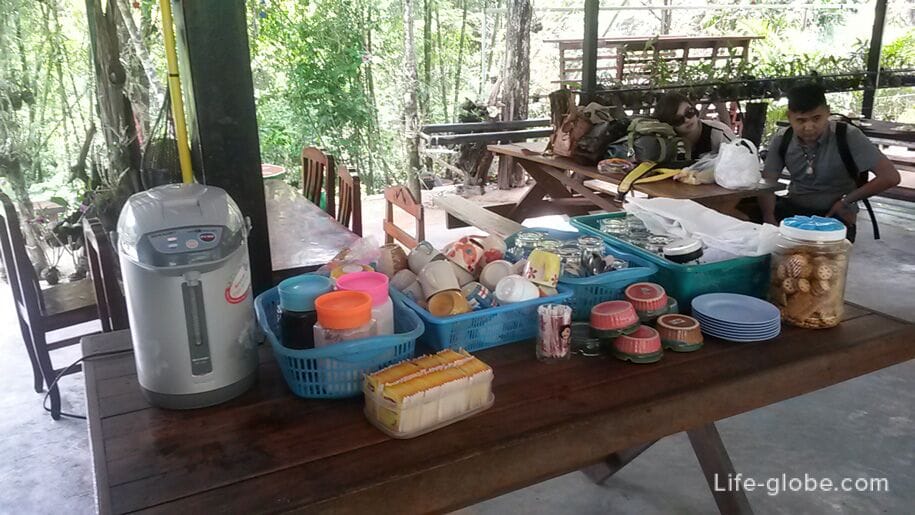
The next stop was at the pineapple plantation.
Here the guide showed us and told us how pineapples grow and how they are harvested. It turns out that harvesting pineapples is a very dangerous job - pineapple bushes are sharp and it's easy to get hurt about them, besides there are snakes in the fields, including poisonous ones. Sometimes snakes bite harvesters, as a result of which a fatal outcome is possible.
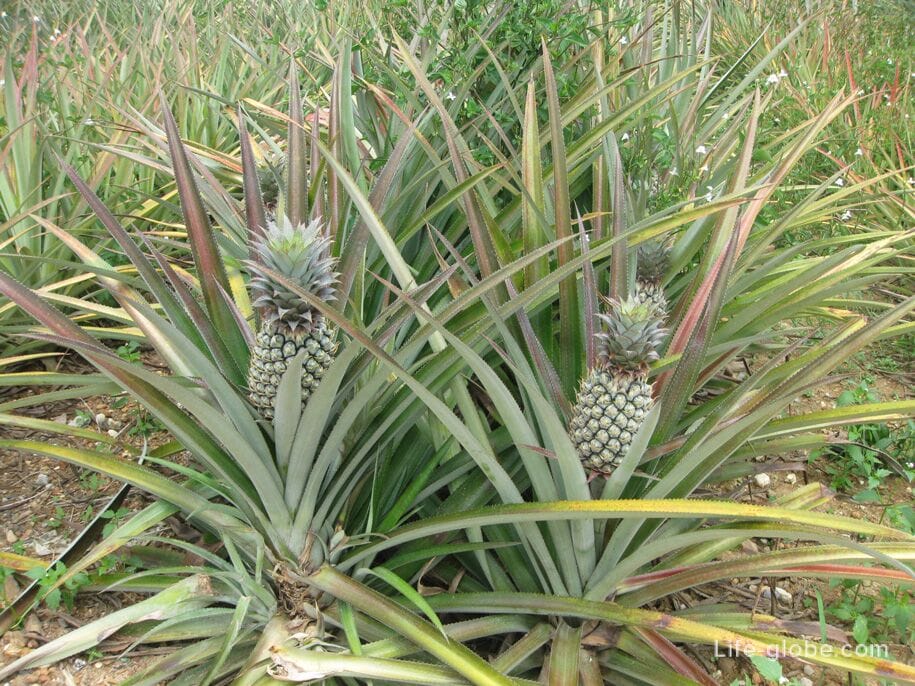
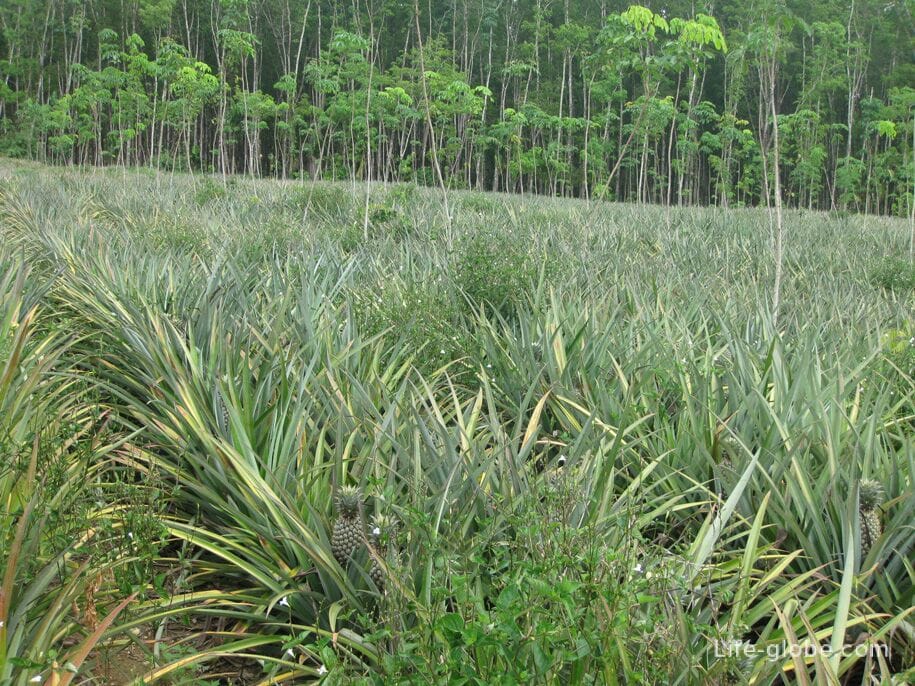
The fifth stop is an elephant safari.
The first thing that unfolded before us was a 15-minute show with an elephant. The little elephant was twirling a hoop, playing the harmonica, while briskly waving his leg, and then did a few tricks. The audience, especially children, were delighted, and the baby elephant walked between people, holding a hat in his trunk, where everyone threw money.
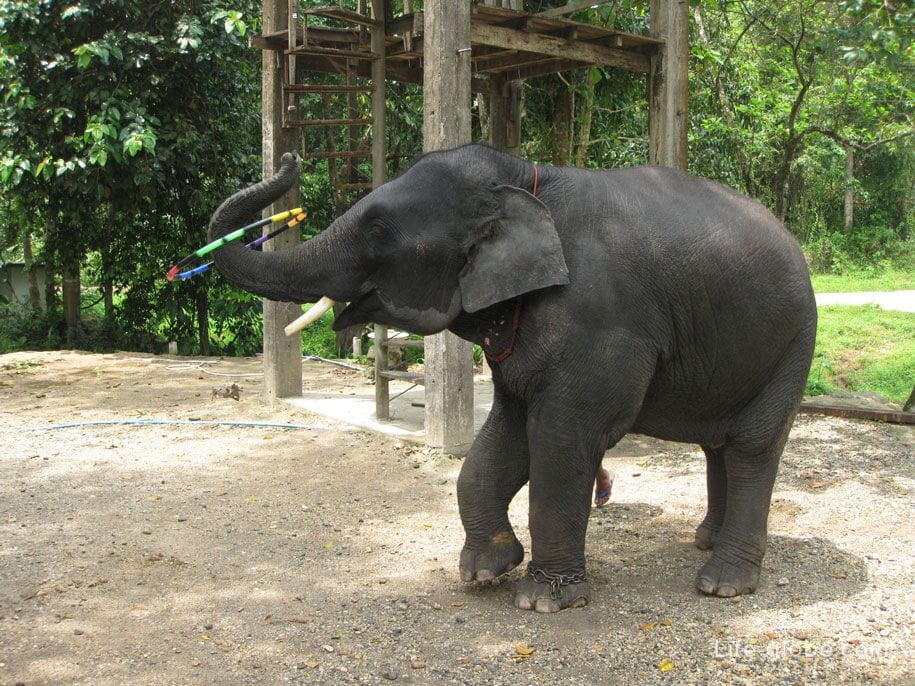

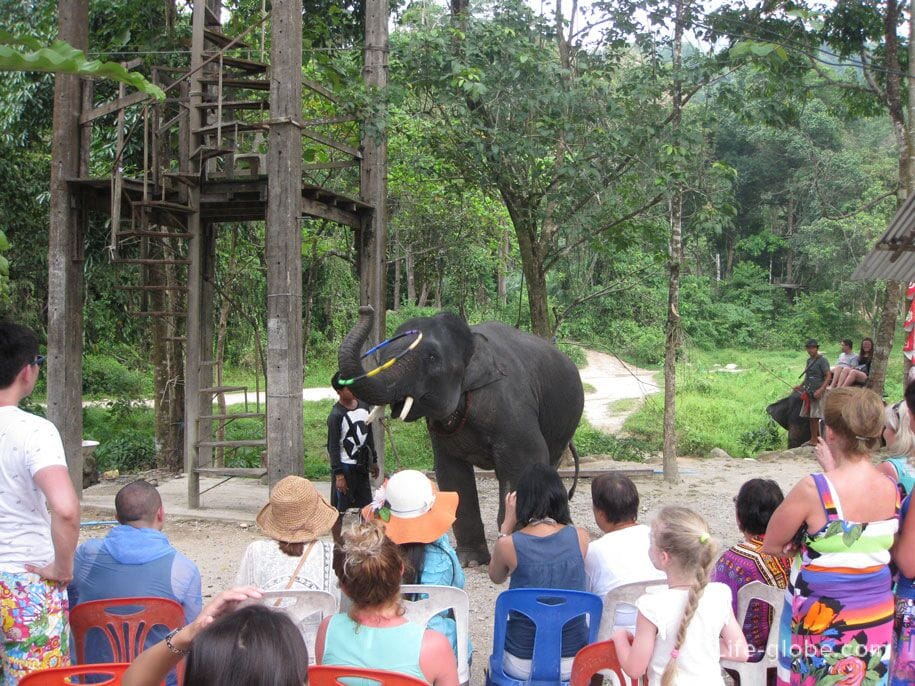
After the show, we were offered a swim with an elephant for a hotel fee of 300 baht per person. We didn't go swimming with the baby elephant, but just watched and took some photos, for history and you, it's over.
Bathing with an elephant was the following: a small pond, natural, in the river, into which the baby elephant was brought, after which all those who paid 300 baht were invited to join him. The participants of this action watered the baby elephant with water, rubbed his back and took pictures with him. The whole process took 10-15 minutes. It looked, to put it mildly, not very good; the children were delighted.
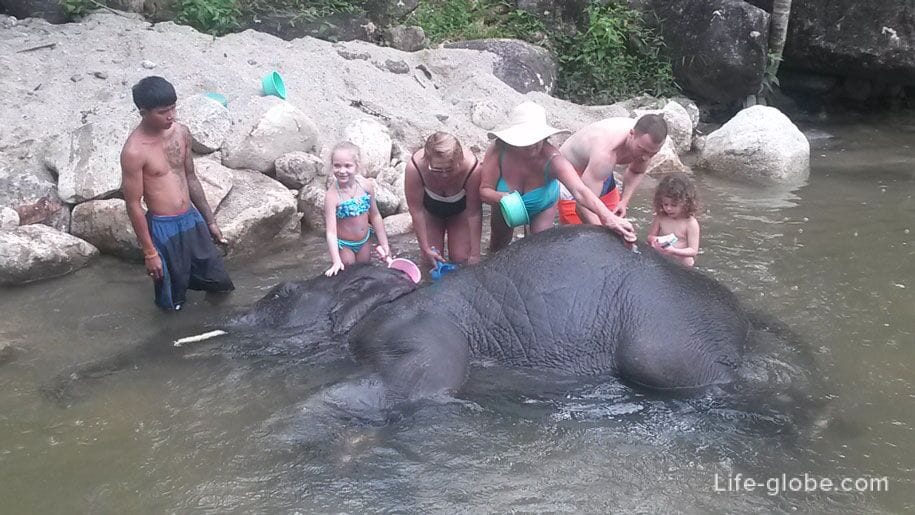
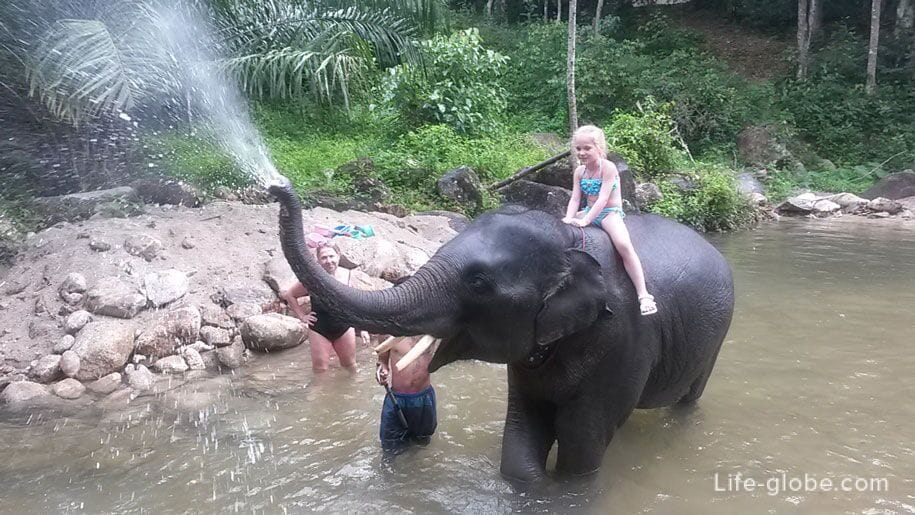
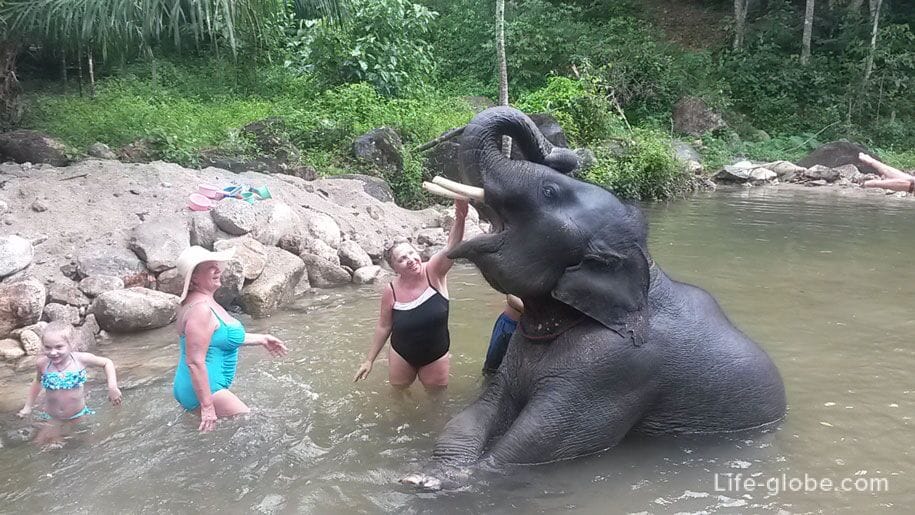
Little baby elephants participate in the show and bathing, they are not allowed to ride tourists until a certain age. Due to its small size and small training, the first few years of training the baby elephant must get used to its driver, his voice and gestures, so the elephants are trained at shows and bathing, and after that, when they grow up, the bones will get stronger and gain experience - they are sent to ride tourists.
After swimming, we all went to the most anticipated part of the tour - elephant riding.
They rode elephants for two people. Boarding on elephants took place in a special house, from where it was convenient to climb into the basket on the animal's back. If you are wearing flip-flops, then you will have to leave your shoes here, and if your shoes fit tightly on your feet, then you can go in shoes.
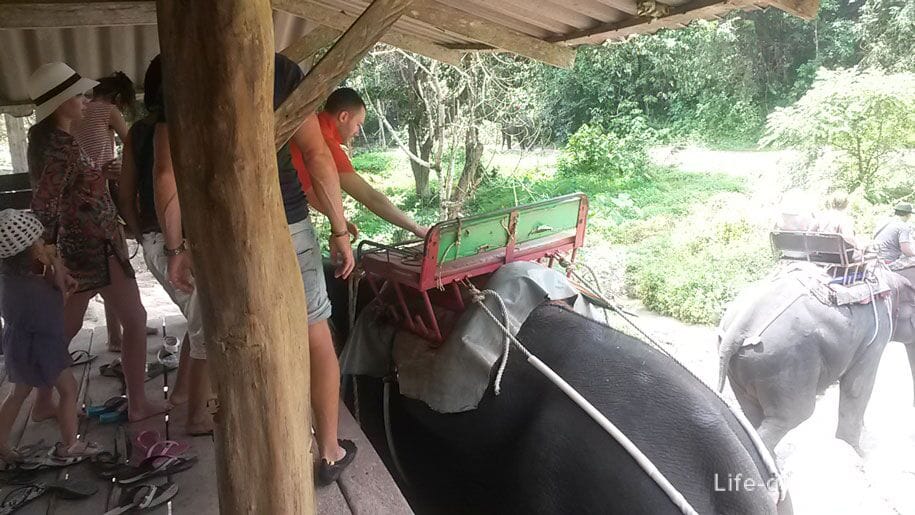
The skating itself lasted 40 minutes.
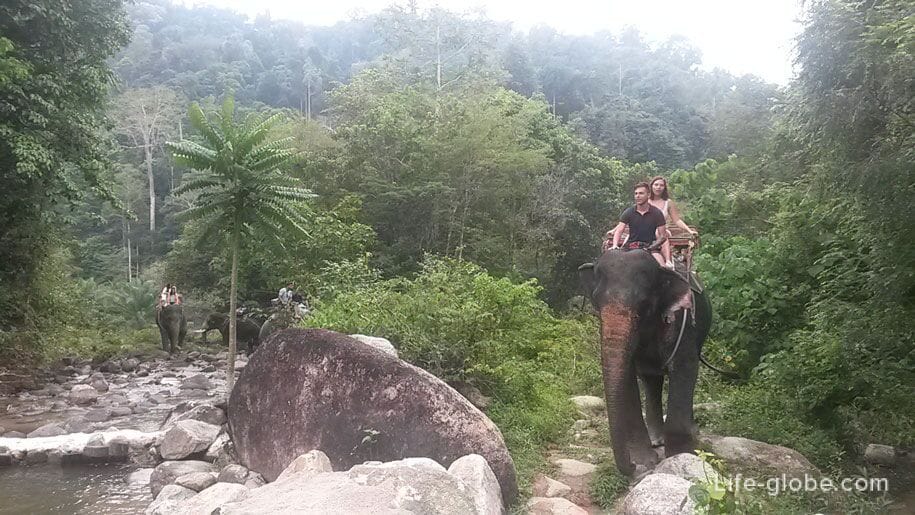

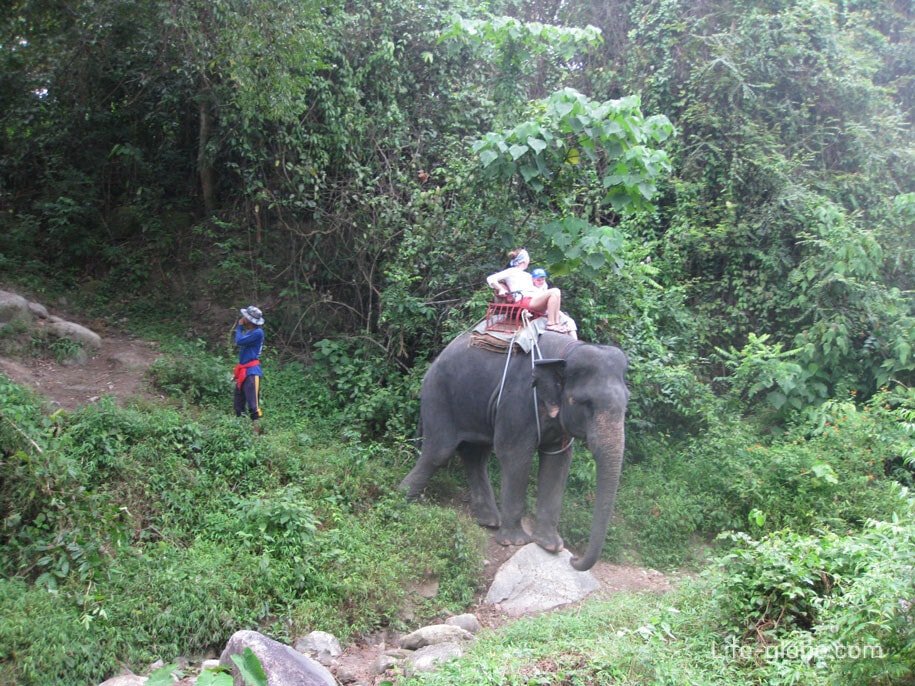
The skiing route went through the jungle, up and down the hills, as well as partially across the river, so in addition to the skiing itself, there was an opportunity to enjoy the beautiful views of the Thai jungle.
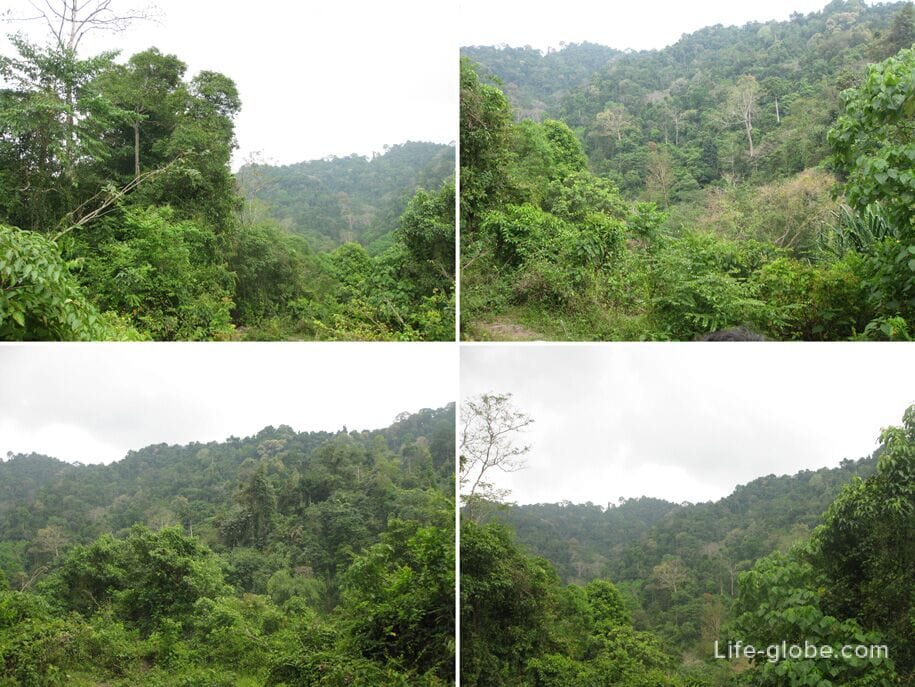
When you sit on the back of an elephant, the ground is far enough away, and the basket also swings if the animal rises or descends from the hills, and you shake and chatter from side to side. It's not scary, it hurts my back a little, it makes some people laugh.

During the ride, the teamsters offered, for a small fee of 100 baht, to take some photos of us riding an elephant, while the elephants poured water on everyone, dialling it into the trunk, and arranged a refreshing shower.

On the farm, it was possible to feed the elephants with bananas, while taking some memorable colorful photos. Bananas for feeding can be taken with you or bought on the spot at a cost of 100 baht.
The next and last stop of our tour was the cave temple of the reclining Buddha (Wat Suwan Kuha, Wat Suwan Kuha) and the Monkey Cave.
On the territory of the Suwan Kua temple complex there are: an active monastery, a cave with a reclining Buddha who entered Nirvana and is located between heaven and earth, as well as a cave-mountain of monkeys.
Entrance to the temple-cave is paid. The cost is 20 baht per person in the form of a donation.
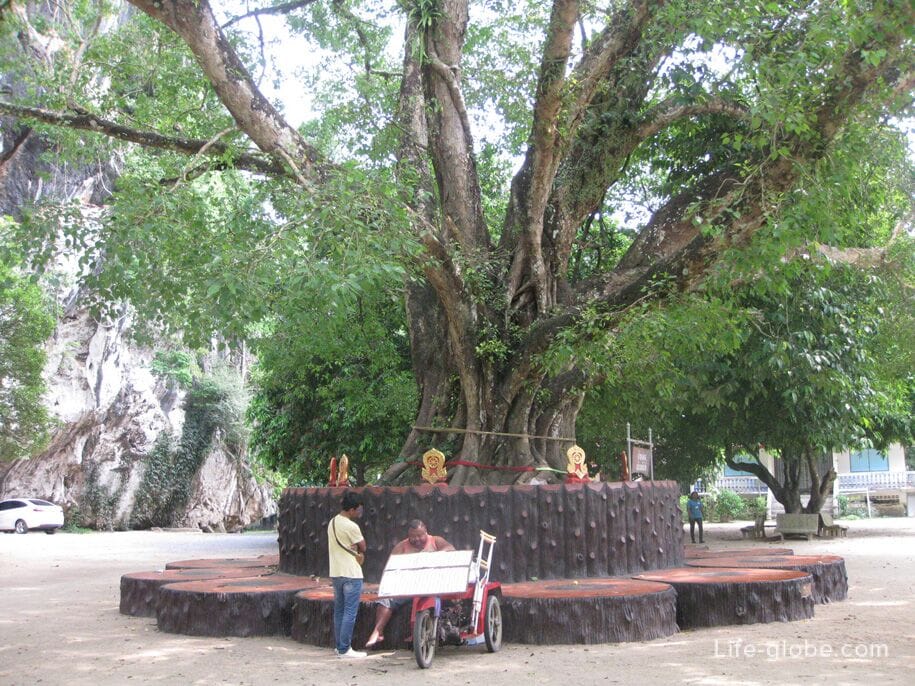
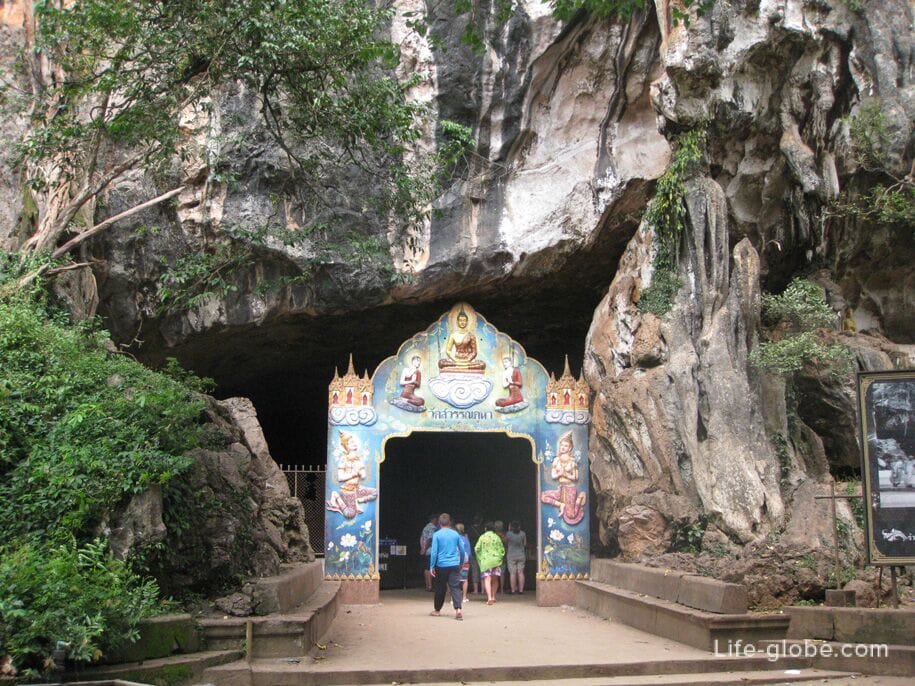
Going inside, you get into the first hall, here we see the legendary reclining Buddha and other attributes of Buddhism.
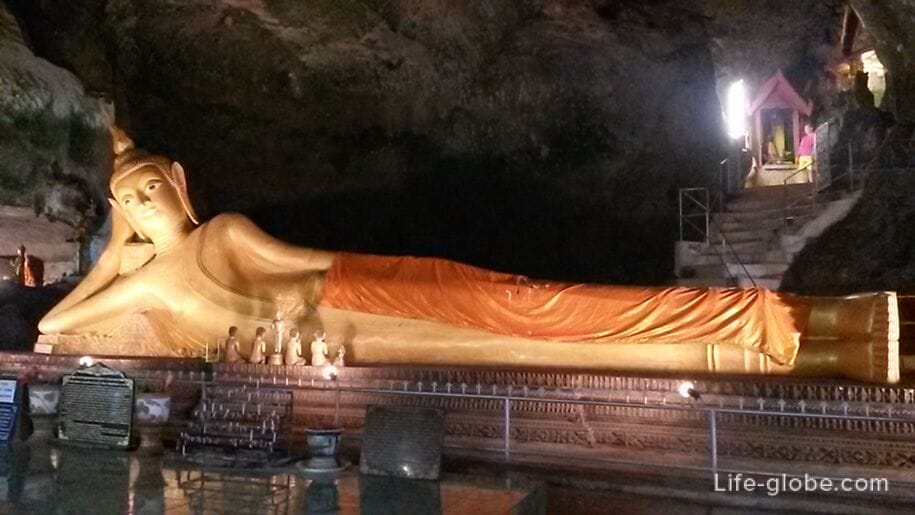
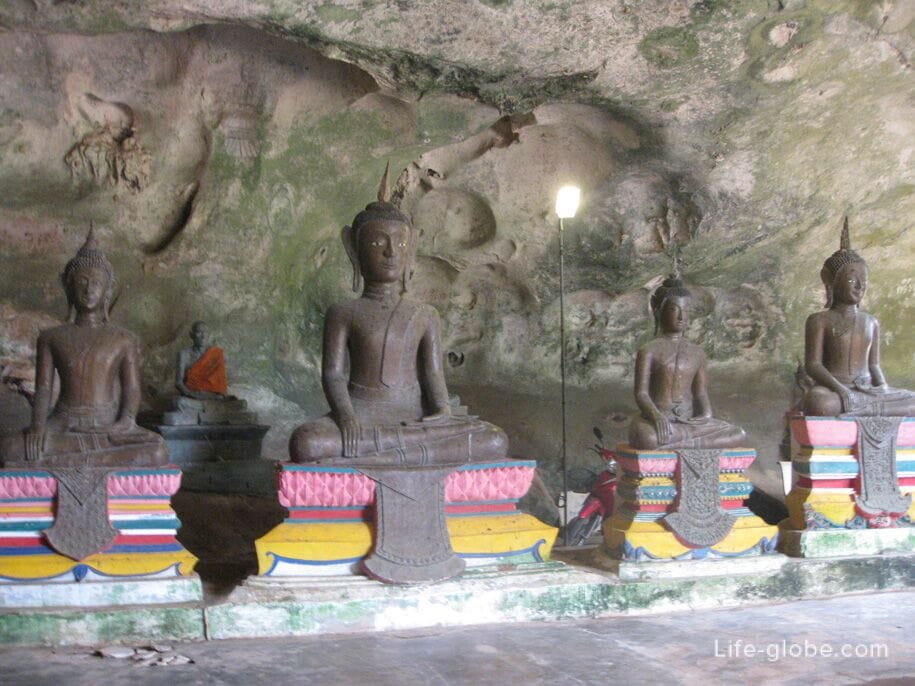
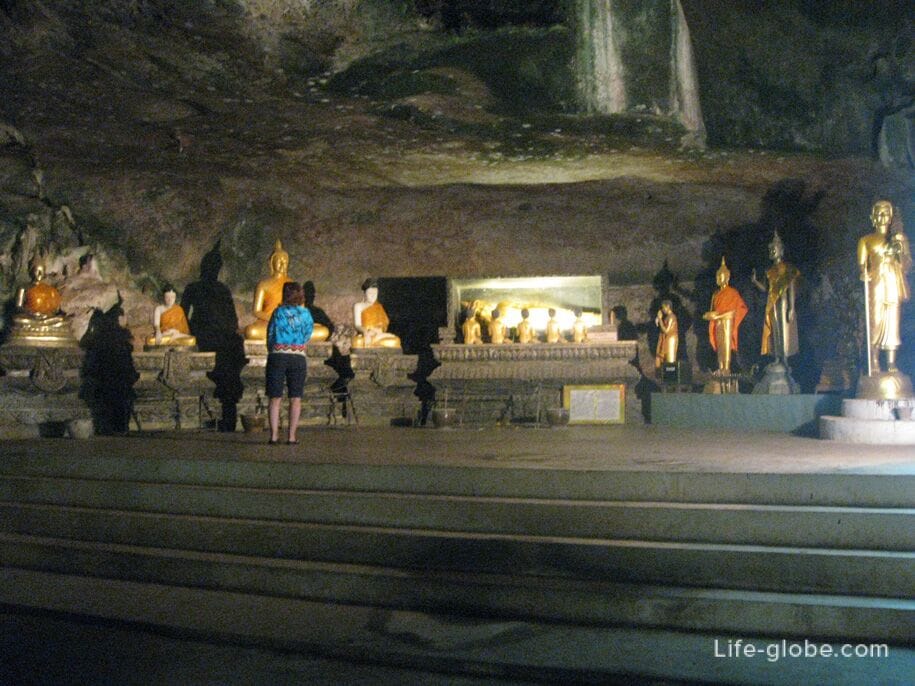
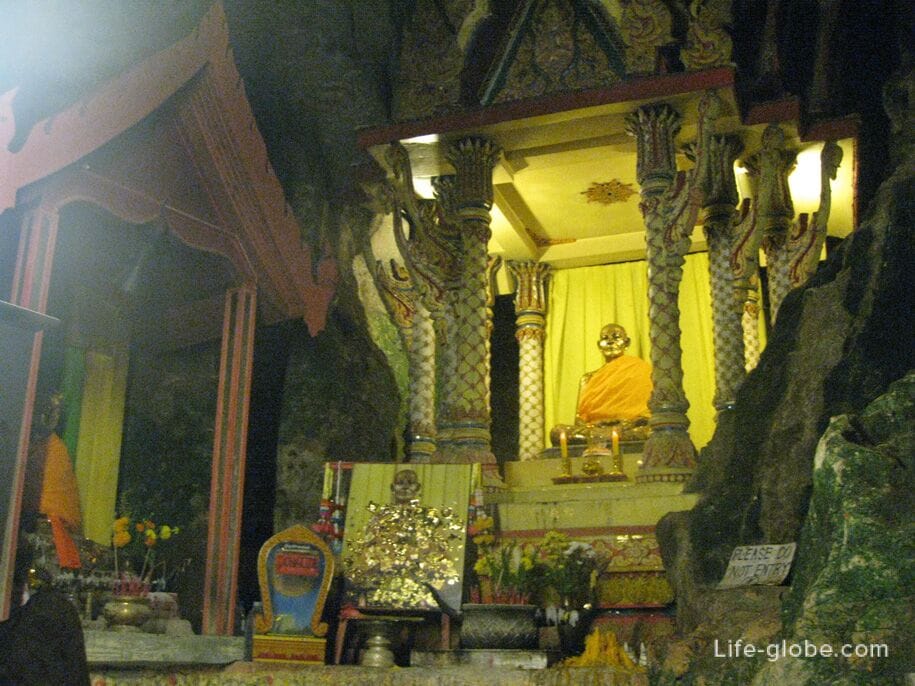
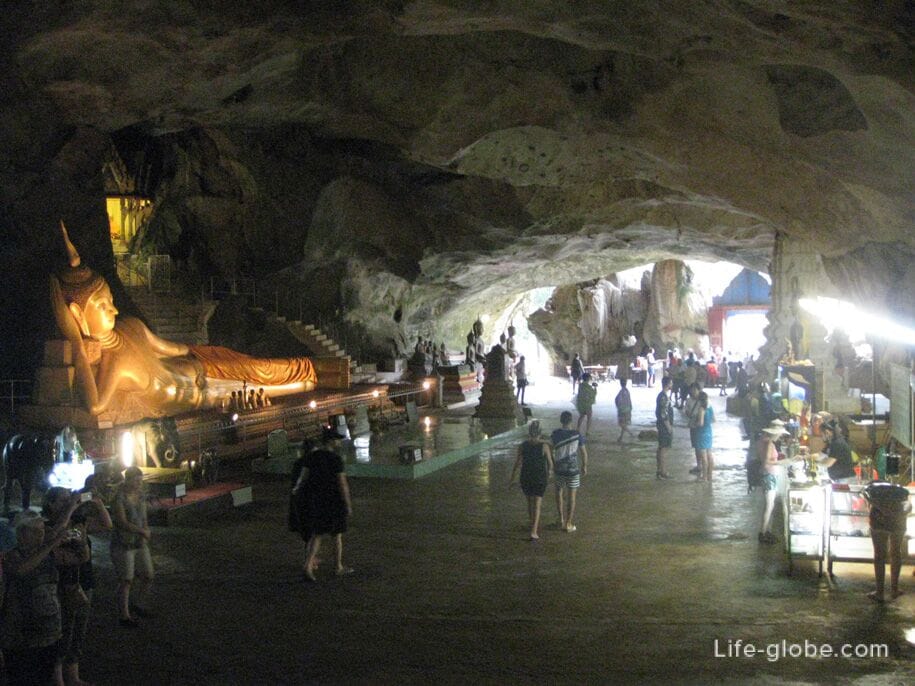
Once this hall served as the main temple. Currently, the temple has been moved to the structures near the cave, and the cave itself has become a place for tourists to visit.
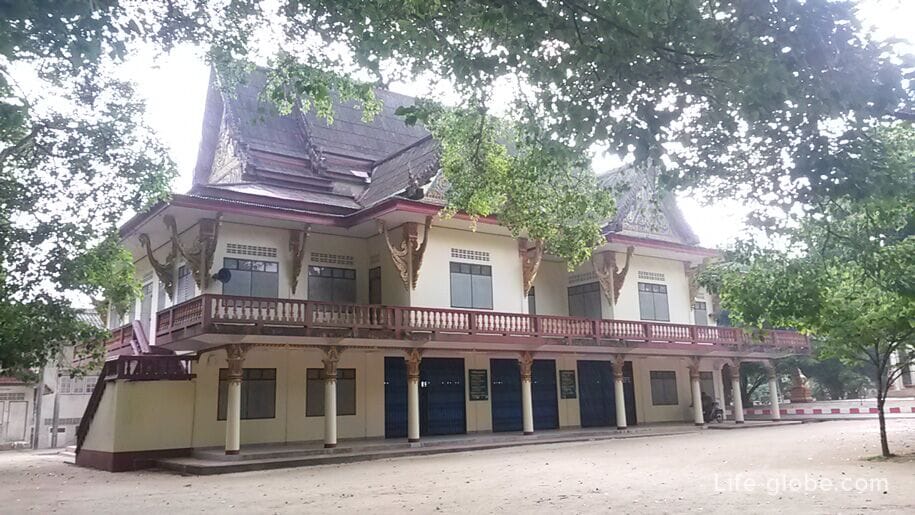
Passing further along the territory of the temple and climbing the steps, we find ourselves in a completely different world, where semi-darkness and mystery reign. This is the cave of the holy monkeys.
The monkeys here are very cute and friendly, surround tourists and snatch treats right out of their hands. Be careful, hold your phones and cameras tightly.
Although the monkeys are quite friendly, but still, it's better not to take risks and not try to grab the monkeys and not climb to their muzzle - they can bite, then there will be no trouble, unnecessary injections and expenses are useless.
Treats for monkeys can be brought with you or buy bananas from local merchants at a price of 50 baht for a few pieces.
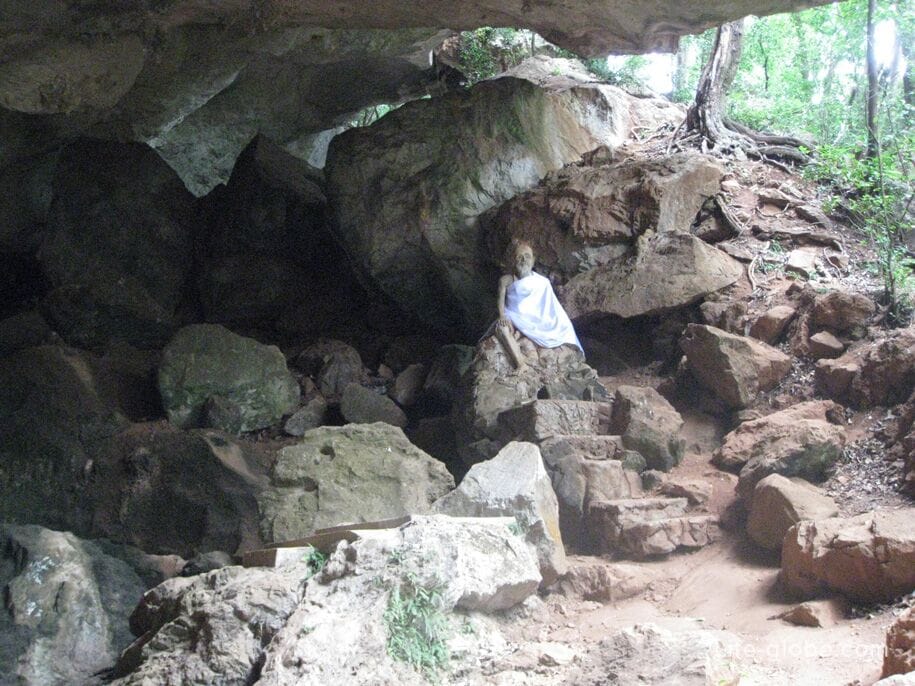
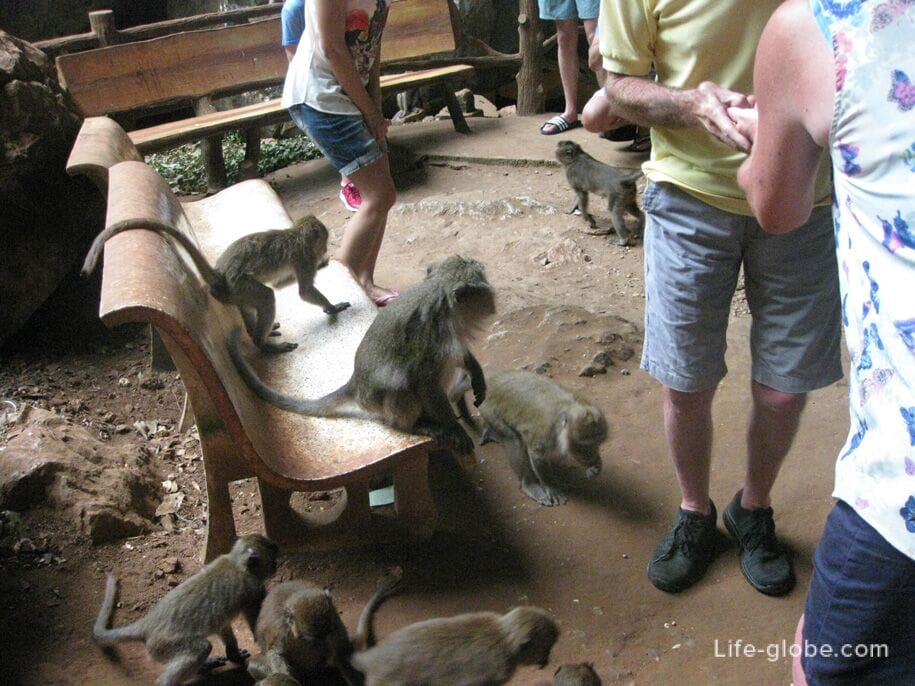
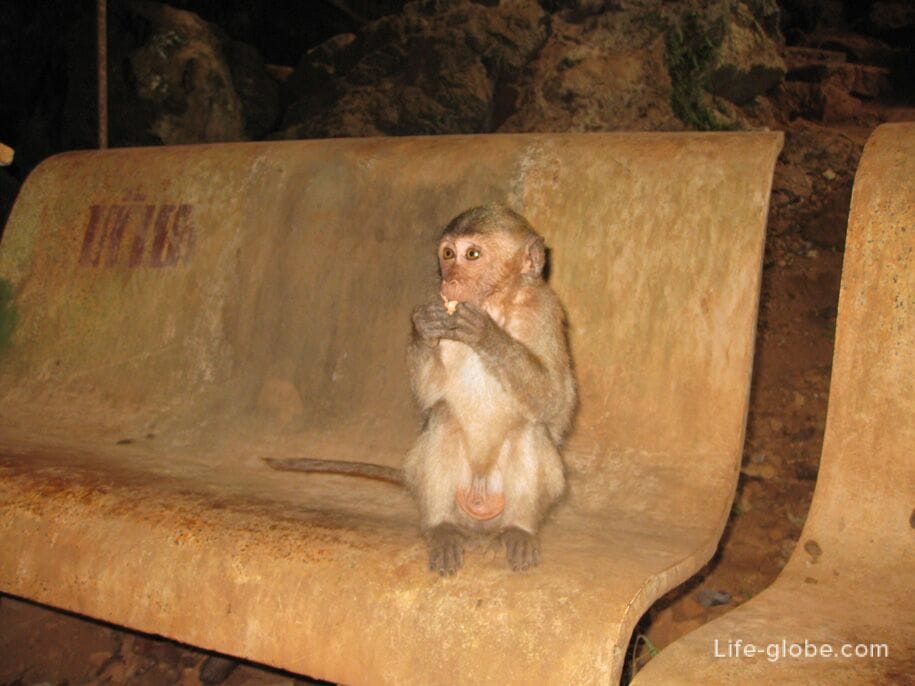

There is a toilet and shops near the cave.
This is where our tour came to an end. We took a minivan bus and went home to the hotels. On the way, for about 15 minutes we were taken to a tea shop, where, if desired, you can buy teas, herb collections and other products from medicinal herbs. And if there is no desire to buy anything, you can just taste four types of tea, which we did.
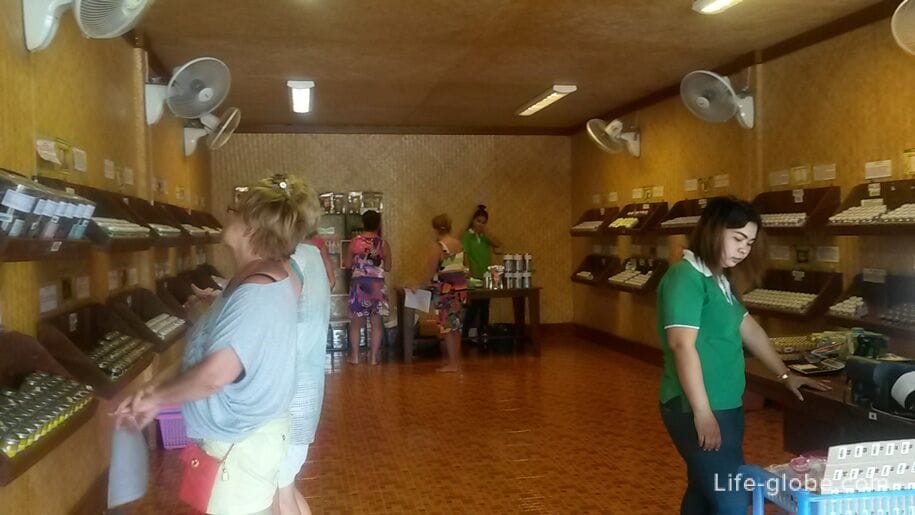
All accommodation facilities in Phuket (hotels, villas, houses, apartments), both near beaches and more remotely from those, can be viewed and booked here